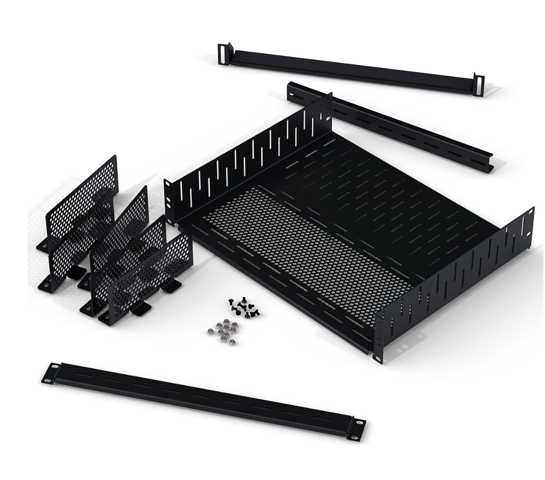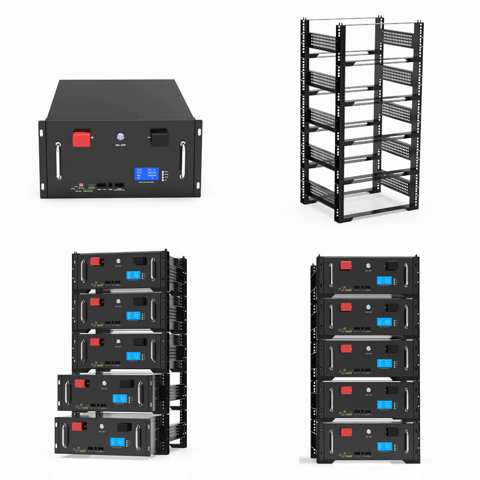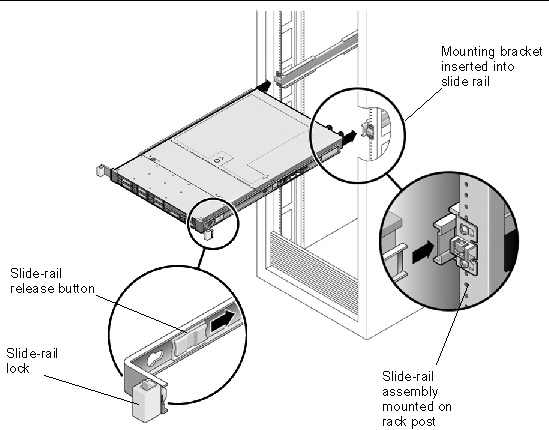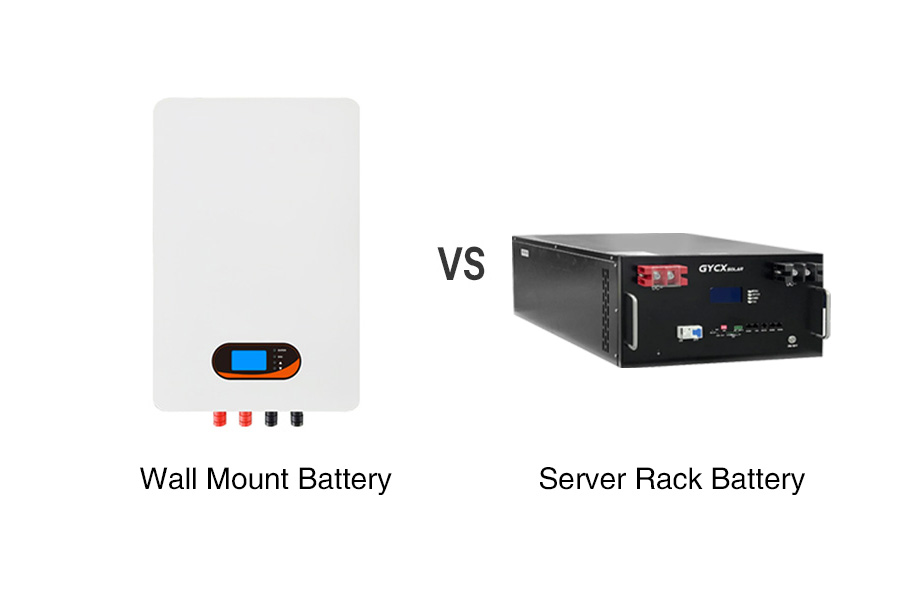كيف يعمل رف جبل?
هل سبق لك أن نظرت إلى خزانة لتكنولوجيا المعلومات أو مركز بيانات وتعجبت من كيفية جميع المعدات المعقدة - الخوادم, مفاتيح الشبكة, وإمدادات الطاقة - منظمة? أو ربما تبحث في حلول تخزين قوية للطاقة مثل "بطاريات حامل الرف" وتتساءل كيف تتناسب مع هذا النظام الفعال. السحر وراء هذه المنظمة هو نظام جبل الرف, نهج موحد يوفر فوائد هائلة.
يعمل تثبيت الرف باستخدام إطار واسع مقاس 19 بوصة (رف المعدات) مزود بقضبان التثبيت الرأسية. المعدات المصممة خصيصًا لتركيب الرف, مثل الخوادم, معدات الشبكة, أو "بطاريات حامل الرف" الحديثة," لديه لوحة أمامية أيضا 19 بوصة واسعة مع ثقوب التثبيت. ثم يتم تأمين هذه الأجهزة على القضبان باستخدام مسامير وغالبًا ما تدعمها مجموعات السكك الحديدية المتخصصة التي تنزلق إلى الحامل لتحمل الوزن. يسمح هذا النظام بالكثافة, منظم, والسكن المتاح للمكونات الحرجة, مع ارتفاع المعدات تقاس في موحدة "u" الوحدات.

في جيكس سولار, كثيرا ما نستخدم حلول جبل الرف, خاصة بالنسبة للفوسفات الحديد الليثيوم القابل للتطوير (LFP) أنظمة البطارية. إن فهم كيفية عمل تصاعد الرف يساعد على تقدير الكفاءة, أمان, والنموذج الذي يجلبه إلى الإعدادات المعقدة, بما في ذلك تخزين الطاقة الشمسية المتقدمة. دعنا نستكشف هذا النظام بمزيد من التفصيل.
ما هي بطاريات رف الخادم?
لقد سمعت عن تصاعد الرف, والآن "بطاريات رف الخادم." هل هذه مجرد بطاريات منتظمة وضعت على رف, أم أنها شيء أكثر تخصصًا? عندما نتحدث عن تخزين الطاقة الحديثة, بطاريات رف الخادم هي في الواقع حل مصمم لهذا الغرض.
بطاريات رف الخادم هي وحدات بطارية ليثيوم أيون, الأكثر شيوعًا استخدام فوسفات الحديد الليثيوم (LFP) كيمياء من أجل سلامتها الممتازة وحياة دورة طويلة, مصمم خصيصًا لتناسب رفوف المعدات القياسية مقاس 19 بوصة. هم وحدات, وهذا يعني أنه يمكنك في كثير من الأحيان "المكدس" أو تثبيت وحدات متعددة لتوسيع سعة تخزين الطاقة الخاصة بك. تتضمن كل وحدة عادة نظام إدارة البطارية المتكامل الخاص بها (خدمات إدارة المباني) للحماية والمراقبة, وهي توفر حلًا منظمًا ومنظمًا فعالًا للغاية للتطبيقات مثل تخزين الطاقة الشمسية, أنظمة الطاقة الاحتياطية, واستقلال الطاقة خارج الشبكة.

الغوص أعمق: تشريح بطارية حامل الحامل
تم تصميم بطاريات رف الخادم من أجل الأداء والتكامل داخل بيئة معروفة:
- عامل شكل موحد: يلتزمون بمعايير العرض مقاس 19 بوصة, السماح لهم بتثبيتها في نفس الرفوف التي تتبعها خوادم, مفاتيح الشبكة, وحدات UPS. يقاس طولهم في "u" الوحدات (1ش = 1.75 بوصة), يتراوح شائع من 2U إلى 5U لكل وحدة.
- كيمياء LFP (عادة): نظرًا لأننا في GYCX Solar نؤكد غالبًا على التخزين الثابت, LFP (LifePo₄) هل الكيمياء المناسبة بسبب سلامتها المتأصلة (الاستقرار الحراري العالي, أقل عرضة للهروب الحراري), حياة طويلة جدا (آلاف دورات الشحن/التفريغ), ولأنه لا يحتوي على الكوبالت, معالجة بعض مخاوف المصادر الأخلاقية.
- الشكل وقابلية التوسع: هذه ميزة كبيرة. يمكنك البدء بوحدة أو وحدتين وإضافة المزيد بالتوازي بسهولة لاحقًا لزيادة إجمالي سعة تخزين الطاقة الخاصة بك (كيلووات ساعة) مع نمو احتياجاتك, دون الحاجة إلى استبدال النظام بأكمله.
- نظام إدارة البطاريات المتكامل (خدمات إدارة المباني): يضم كل وحدة عادةً BMS الذكية الخاصة بها. هذا المكون الحرج يحمي خلايا البطارية من الشحن الزائد, الإفراط في التفريغ, الإفراط في التيار, ودرجات حرارة متطرفة. كما أنه يؤدي موازنة الخلية (أمر حيوي لصحة LFP وطول العمر) وتوصيل معلومات الحالة إلى وحدة تحكم العاكس أو النظام.
- التطبيقات: مثالي للطاقة الشمسية السكنية + تخزين, تخزين الطاقة التجارية, كبائن أو مرافق خارج الشبكة, وتوفير قوة احتياطية قوية. قدرتهم على أن تكون محتوية وتوسيع نطاقها تجعلها متعددة الاستخدامات للغاية.
- الفوائد في الرف: إن تركيب هذه البطاريات في رف يعني كثافة طاقة عالية في بصمة صغيرة, كابلات منظمة, وغالبًا ما تكون الإدارة الحرارية أفضل حيث تم تصميم الوحدات النمطية والرفوف مع مراعاة تدفق الهواء.
ما هي وظيفة جبل الرف?
لماذا تهتم بالرفوف على الإطلاق? ما هو الغرض الأساسي وراء هذا النظام الموحد لمعدات التثبيت? وظائف نظام حامل الرف كلها موجهة نحو الكفاءة, منظمة, حماية, وقابلية التوسع للأنظمة الإلكترونية الحرجة.
الوظيفة الأساسية لنظام حامل الرف هي توفير موحد, فعال الفضاء, يؤمن, والإطار المنظم لإسكان قطع متعددة من المعدات الإلكترونية. وهذا يشمل أجهزة مثل الخوادم, مفاتيح الشبكة, أجهزة التوجيه, لوحات التصحيح, إمدادات الطاقة غير المنقطعة (يو بي إس), و, بشكل متزايد, أنظمة بطارية حامل رف لتخزين الطاقة. من خلال القيام بذلك, يحسن تدفق الهواء للتبريد, يبسط إدارة الكابلات, يعزز الأمن البدني, ويجعل المعدات أكثر سهولة للصيانة والترقيات.

الغوص أعمق: مزايا إطار موحد
دعنا نقسم الوظائف الرئيسية وفوائد استخدام رفوف المعدات:
- التقييس (EIA-310): يملي معيار EIA-310 المعتمد على نطاق واسع عرض 19 بوصة لألواح المعدات و "U" وحدة للارتفاع. هذا يضمن أن المعدات من مختلف الشركات المصنعة يمكن أن تتناسب عمومًا مع أي رف قياسي, تعزيز قابلية التشغيل البيني والاختيار.
- تحسين المساحة: تتيح لك الرفوف استخدام الفضاء الرأسي بكفاءة بشكل لا يصدق. بدلاً من المعدات القيمة المترامية الأطراف عبر الغرفة, إنها مكدسة بدقة, تعظيم كثافة المكون في الحد الأدنى من البصمة. هذا أمر بالغ الأهمية في مراكز البيانات, الخزانات, وحتى بالنسبة لإعدادات تخزين الطاقة المدمجة.
- إدارة التنظيم والكابلات: تشجع بيئة ذات رفوف (وغالبًا ما يوفر ميزات ل) تنظيم منهجي. المعدات مركزية, ومع ملحقات مثل مديري الكابلات, لوحات التصحيح, وتوجيه مدروس, يمكن أن تبقى كابلات الطاقة والبيانات مرتبة, المسمى, والخروج من الطريق. هذا يقلل بشكل كبير من الفوضى, يحسن تدفق الهواء, وتبسيط استكشاف الأخطاء وإصلاحها.
- تحسين تدفق الهواء والتبريد: تم تصميم معظم الرفوف والمعدات المثبتة على الرف لأنماط تدفق الهواء محددة (في كثير من الأحيان من الأمام إلى الخلف أو أسفل إلى أعلى). الأرفف الصحيح يضمن الحفاظ على هذه المسارات, المساعدة في الحفاظ على إلكترونيات حساسة باردة وتمديد حياتهم التشغيلية. يتم استخدام لوحات الطهي لتغطية مساحات U فارغة لمنع الهواء الساخن والبارد من الخلط بشكل غير فعال.
- الأمن المعزز: تتوفر العديد من الرفوف كخزائن قابلة للقفل مع أبواب صلبة أو مثقبة ولوحات جانبية. هذا يوفر الأمن المادي, منع الوصول غير المصرح به إلى خوادم قيمة, معدات الشبكة, يو بي إس1. الوحدات, أو أنظمة البطارية.
- قابلية التوسع وإمكانية الوصول: كما احتياجات تنمو, من السهل بشكل عام إضافة المزيد من المعدات إلى مساحة U المتوفرة أو حتى إضافة المزيد من الرفوف. تتيح ميزات مثل القضبان المنزلق على الخوادم وبعض وحدات UPS/البطارية الوصول بسهولة إلى الجزء الخلفي من المعدات للصيانة أو استبدال المكونات دون الاضطرار إلى إلغاء التغلب عليها بالكامل.
لقد رأيت مباشرة في منشآتنا الشمسية GYCX كيف رف مخطط جيدًا لعاكس, وحدات البطارية, ويمكن أن تجعل مراقبة معدات النظام المعقد تبدو محترفة بشكل لا يصدق ويكون أسهل بكثير في الخدمة أسفل الخط.
كيفية إعداد حامل رف?
التخطيط لإعداد رف المعدات الخاص بك, ربما لمختبر المنزل, خزانة تجارية صغيرة لتكنولوجيا المعلومات, أو حتى لنظام بطارية حامل قوي? سيضمن النهج المنهجي لعملية الإعداد السلامة, استقرار, والأداء الأمثل لجميع معداتك.
يتضمن إعداد حامل على الرف بشكل عام هذه الخطوات الرئيسية:
- التخطيط للتخطيط: حدد أين ستذهب كل قطعة من المعدات, وضع عناصر أثقل مثل وحدات UPS والبطاريات الكبيرة في الأسفل للاستقرار.
- ترسيخ الرف (اذا كان ضروري): من أجل السلامة, خاصة مع الأحمال الثقيلة, الترباس بشكل آمن على الأرض و/أو الجدار.
- تثبيت مجموعات السكك الحديدية: نعلق مجموعات السكك الحديدية المناسبة (ثابت أو انزلاق) لكل قطعة من المعدات إلى مشاركات الرف العمودية.
- تصاعد المعدات: حرك معدات أو رفع المعدات بعناية على القضبان وقم بتثبيتها بالمسامير.
- إدارة الكابلات: كبلات الطاقة والبيانات بدقة باستخدام مديري الكابلات والعلاقات.
- ضمان توزيع تدفق الهواء المناسب وتوزيع الطاقة: قم بتثبيت لوحات الطمس في مساحات فارغة وتوصيل الأجهزة بوحدة توزيع الطاقة (PDU) إذا لزم الأمر.

الغوص أعمق: نهج منهجي لتثبيت الرف
دعونا نوضح خطوات الإعداد هذه:
- السلامة اولا & تحضير:
- الربط: كما نوقش سابقا, إذا كان الرف الخاص بك سيحتفظ بوزن كبير (مثل بطاريات رف الخادم المتعددة أو وحدات UPS), هو - هي يجب ترتكز بشكل آمن على الأرض و/أو الجدار لمنع النحل. هذا مقياس سلامة حاسم.
- رفع آمن: الحصول على مساعدة متاحة للعناصر الثقيلة. استخدم تقنيات الرفع المناسبة.
- أدوات: جمع الأدوات اللازمة: مجموعة مفك البراغي, أداة القفص الجوز (إذا كنت تستخدم رفوف الفتحة المربعة), مستوى, شريط قياس, التدريبات المناسبة والبت إذا ما ترسخ.
- التخطيط لتصميمك:
- توزيع الوزن: قم دائمًا بتثبيت أثقل المكونات (يو بي إس, بطاريات كبيرة, خوادم كثيفة) في أسفل الحامل. هذا يقلل من مركز الثقل.
- استراتيجية تدفق الهواء: افهم كيف يرسم الجهاز الخاص بك في الهواء البارد ويطرد الهواء الساخن. وضع خطة لتحسين هذا, ضمان عدم حظر الفتحات.
- إمكانية الوصول: فكر في المكونات التي قد تحتاج إلى الوصول إليها بشكل متكرر.
- تثبيت مجموعة السكك الحديدية: عادةً ما تأتي كل قطعة من المعدات القابلة للتجربة على الرف مع مجموعة السكك الحديدية الخاصة بها أو لديها خيارات متوافقة محددة. اتبع تعليمات الشركة المصنعة على وجه التحديد لتثبيت هذه القضبان على المنشورات الرأسية لرفك. تأكد من أنها مستوية وتثبيتها بشكل آمن على العمق الصحيح.
- معدات التثبيت: مع القضبان في مكانها, حرك الجهاز أو ارفعه بعناية. للعناصر الثقيلة, غالبًا ما تكون هذه وظيفة من شخصين. مرة واحدة في الموقف, تأمين اللوحة الأمامية للمعدات إلى قضبان الرف مع البراغي المناسبة (أو القفص المكسرات والمسامير).
- إدارة الكابلات: هذا أمر بالغ الأهمية لإعداد نظيف وتدفق هواء جيد.
- استخدم وحدات توزيع الطاقة المثبتة على الرف (PDUs) لمنافذ السلطة.
- كابلات الطريق بدقة على جانبي أو خلف الحامل باستخدام مديري الكابلات الرأسية والأفقية, أحزمة الفيلكرو, أو روابط الرمز البريدي (ليس ضيق جدا!).
- افصل كابلات الطاقة عن كبلات البيانات حيثما أمكن ذلك لتقليل التداخل.
- الكابلات تسمية في كلا الطرفين.
- التأريض: تأكد من أن رف المعدات نفسه وجميع الأجهزة المثبتة ترتكز بشكل صحيح وفقًا للرموز الكهربائية للسلامة.
- تحسين تدفق الهواء: تثبيت لوحات الطمس في أي مساحات U غير مستخدمة. هذا يمنع هواء العادم الساخن من إعادة تدوير مآخذ الهواء الأمامي للمعدات الخاصة بك, تحسين كفاءة التبريد.
إن أخذ وقتك والتخطيط بعناية سيؤدي إلى محترف, آمن, وإعداد رف سهل الإدارة.
وهي بطاريات حائط أفضل أو رف خادم?
عندما يتعلق الأمر بنشر تخزين طاقة بطارية الليثيوم, خاصة بالنسبة للتطبيقات التجارية السكنية أو الخفيفة, ستواجه غالبًا شكلين ماديين رئيسيين: بطريق, الكل في واحد بطاريات جدار الجدار والمزيد من المظهر الصناعي بطاريات رف الخادم (التي عادة ما تكون موجودة في خزانة أو رف). لذا, أيهما "أفضل" اختيار لك?
لا هو "أفضل" عالميا; يعتمد الخيار المثالي على احتياجاتك المحددة, فضاء, متطلبات السعة, ميزانية, والتفضيلات الجمالية. بطاريات جدار الجدار (مثل Tesla Powerwall أو Enphase Engrice) غالبًا ما يتم تفضيلها لتصميمها المتكامل والجاذبية السكنية, تقديم قدرة محددة في حزمة ممتعة جمالية. بطاريات رف الخادم توفير وحدات ممتازة, كثافة عالية الطاقة داخل بصمة الرف, وغالبًا ما تكون أكثر فعالية من حيث التكلفة ومرونة لبناء أنظمة أكبر أو أكثر, جعلها رائعة لأولئك الذين يحتاجون إلى قابلية التوسع أو الاندماج في البنية التحتية للحف.

الغوص أعمق: وزن خيارات عامل شكل البطارية الخاص بك
دعنا نقارن هذين النهجين الشائعين لتخزين البطارية:
أنظمة بطارية حائط جبل (على سبيل المثال, تسلا باوردوال, enphase encharge, الموسيقى التصويرية, LG Energy Solution Resu Prime):
- الايجابيات:
- جماليات: مصمم ليكون جذابًا بصريًا, في كثير من الأحيان مع أنيقة, تبدو حديثة مناسبة للتركيب في المرائب, غرف المرافق, أو في بعض الأحيان مناطق المنزل أكثر وضوحا.
- الكل في واحد (غالباً): العديد من الطرز تدمج البطارية, خدمات إدارة المباني, وأحيانًا حتى العاكس الهجين في حاوية واحدة, تبسيط التثبيت في بعض النواحي.
- النظم الإيكولوجية للعلامة التجارية: يمكن أن تقدم تكاملًا سلسًا إذا كنت قد استثمرت بالفعل في نظام الطاقة الشمسية أو الطاقة المصنعة الخاصة.
- نقاط سعة محددة: يتم تقديمها عادة في سعة محددة (على سبيل المثال, 5 كيلووات ساعة, 10 كيلووات ساعة, 13.5 كيلو واط لكل وحدة), والتي يمكن موازية لمزيد من التخزين.
- سلبيات:
- قابلية التوسع: بينما يمكنك موازية الوحدات, قد يكون التحجيم أقل حبيبًا أو أكثر تكلفة لكل كيلوواط ساعة إلى ما بعد نقطة معينة مقارنة بوحدات الرف.
- الطبيعة الملكية: قد يتم تصميم بعض الأنظمة للعمل بشكل أفضل (أو فقط) مع المحولات أو البرامج المحددة من نفس الشركة المصنعة, يحتمل أن يحد من المرونة في المستقبل.
- يكلف: في بعض الأحيان يمكن أن يكون لها تكلفة أعلى لكل كيلو وات ساعة, خاصة إذا كنت بحاجة إلى قدرة كبيرة, بسبب التصميم والعلامات التجارية المتكاملة.
- قابلية الإصلاح: قد تكون هناك مشكلة مع مكون واحد في وحدة الكل في واحد أكثر تعقيدًا للخدمة.
أنظمة بطارية رف الخادم (على سبيل المثال, وحدات LFP من Pylontech, EG4, قوة القلعة, جروات, إلخ., مثبت في رف/خزانة):
- الايجابيات:
- عالي النموذج & قابلية التوسع: من السهل للغاية زيادة السعة عن طريق إضافة المزيد من الفرد (في كثير من الأحيان ~ 5KWH) وحدات بالتوازي. هذا يوفر تحكمًا محببًا للغاية في حجم النظام.
- فعالية التكلفة للأنظمة الأكبر: لاحتياجات KWH أكبر, غالبًا ما يكون بناء نظام ذو وحدات رف متعددة أكثر فعالية من حيث التكلفة لكل كيلو وات ساعة.
- المرونة & الانفتاح: تم تصميم العديد من بطاريات رف LFP للتواصل مع مجموعة واسعة من المحولات الهجينة الطرف الثالث باستخدام بروتوكولات مفتوحة (مثل Can Bus أو RS485), يمنحك المزيد من الاختيار.
- كثافة عالية: كثافة تخزين طاقة ممتازة ضمن بصمة الرف القياسية.
- قابلية الخدمة: إذا كان لدى وحدة واحدة مشكلة, غالبًا ما يمكن عزله أو استبداله دون أخذ النظام بأكمله في وضع عدم الاتصال (اعتمادا على التصميم).
- سلبيات:
- جماليات/الفضاء: يتطلب رف أو خزانة مخصصة, التي قد لا تكون جذابة بصريًا مثل وحدة الحائط الأنيقة لبعض مالكي المنازل وتناول مساحة أرضية (على الرغم من أنها مضغوطة).
- تكامل المكون: أنت (أو المثبت الخاص بك, مثل GYCX Solar) مسؤولون عن ضمان التكامل السليم للبطاريات, الاتصالات BMS, العاكس, وأي حاويات وكابلات ضرورية, على الرغم من أن العديد من المكونات مصممة لسهولة الاقتران.
قصة GYCX الشمسية: "نناقش هذا في كثير من الأحيان مع العملاء. للسيدة. جونز, الذي أراد نظرة نظيفة في مرآبها وحوالي 10 كيلو وات ساعة من النسخ الاحتياطي, كانت وحدة جدار معينة مثالية. للسيد. تشن, الذي كان لديه ورشة عمل خارج الشوط, قدم نظام مبني مع بطاريات رف خادم LFP القابلة للتطوير في خزانة أفضل مرونة وقيمة طويلة الأجل.
الأمر كله يتعلق بمطابقة حل الحاجة."
فهم كيفية عمل أنظمة حامل الرف - توحيدها, فوائد مثل التنظيم وكفاءة الفضاء, ومبادئ الإعداد المناسب - هي مفتاح تقدير دورها في تكنولوجيا المعلومات الحديثة وتخزين الطاقة. عندما يتعلق الأمر بتخزين الطاقة, تقدم كل من بطاريات حامل الحائط المخصصة وبطاريات رف الخادم متعددة الاستخدامات حلولًا ممتازة.
في GYCX Solar, لدينا خبرة لتصميم وتثبيت حلول تخزين الطاقة القوية باستخدام أي منهج, دائما ضمان آمنة, فعال, ونظام منظم جيدا. إذا كنت تستكشف بطاريات حامل الرف أو تقارن عوامل نموذج التخزين المختلفة, تواصل معنا. نحن هنا لمساعدتك على تشغيل احتياجاتك بشكل فعال.
تعرف على UPS, مصطلح مرتبط بالبطارية, للحصول على فهم مقارن أفضل لمفاهيم البيانات المتعلقة ببطاريات الليثيوم. سيساعدك هذا على اختيار منتج يناسب احتياجاتك بشكل أفضل. ↩
